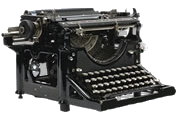How Much Can the Germans Take?
(Collier’s Magazine, 1941)
The attached 1941 Collier’s Magazine article reported on how the people of Berlin were faring after one solid year of R.A.F. bombing. By war’s end it was estimated that as many as 580,000 Germans had been killed as a result of the Allied bombing campaign (many of them were children and far more women than men). This article examines what Berlin life was like when the bombs fell.
Click here to read about the bombing of Japan.
